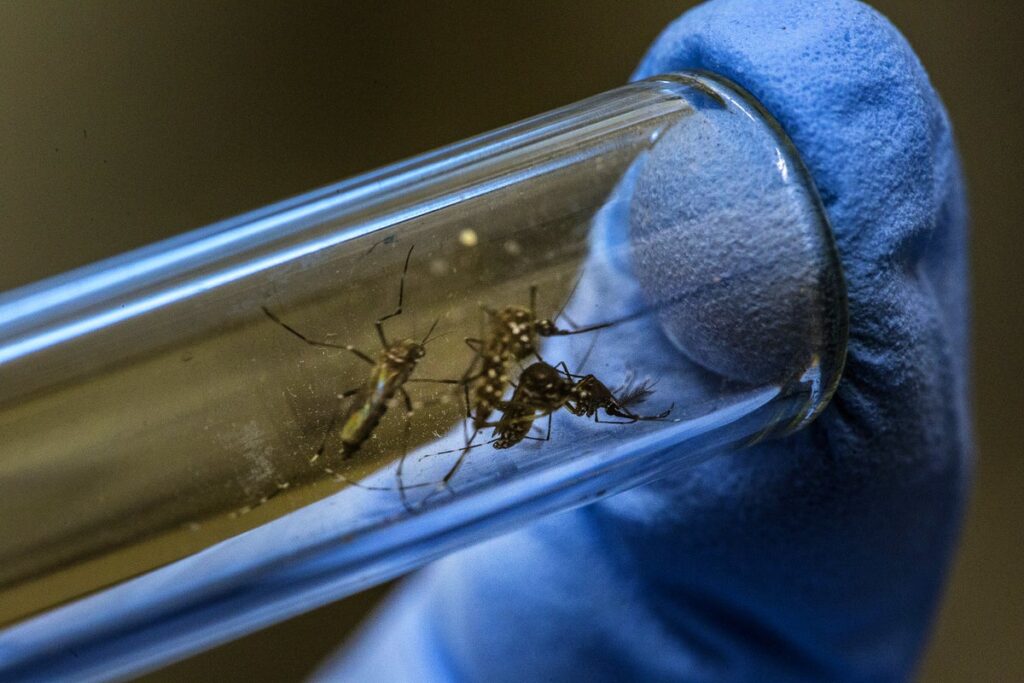August 22, 2025
2 min read
Heat and Rain Can Help Predict When Dengue Will Surge
A new analysis uncovers seasonal patterns of dengue, a mosquito-borne disease, across the Americas, which could help scientists anticipate future outbreaks
Dado Galdieri/Bloomberg Creative Photos/Getty Images
Major dengue outbreaks in the Americas tend to occur about five months after an El Niño event — the periodic warming of the Pacific Ocean that can disrupt global weather — a study has found. Meanwhile, local outbreaks tend to happen about three months after summer temperatures peak and roughly one month after peak rainfall.
The study, published today in Science Translational Medicine, paints a clearer picture of the relationship between the mosquito-borne disease and climatic conditions in the Americas, a region that saw a record-breaking 13 million cases in 2024.
Dengue is caused by four closely related viruses and spread by the Aedes species mosquitoes. There is no specific treatment, and the disease can lead to fever, bone pain and even death.
On supporting science journalism
If you’re enjoying this article, consider supporting our award-winning journalism by subscribing. By purchasing a subscription you are helping to ensure the future of impactful stories about the discoveries and ideas shaping our world today.
The research relied on roughly three decades of surveillance data from 14 countries. Cases in the region tended to rise and fall in sync, on average six months apart, even in places as far as 10,000 kilometres apart.
The findings are “useful to anticipate when a region might expect to see an epidemic, which can help inform planning and preparedness”, says Talia Quandelacy, a co-author and an infectious-disease epidemiologist at the University of Colorado School of Public Health in Aurora. She notes that, although the link between dengue and climate is well known, what stands out in the findings is how this association plays out across the entire continent, “especially given that it’s such a climatically diverse region.”
Toasty mosquitoes
The Aedes mosquitoes typically thrive in warm and humid conditions. Furthermore, the incubation period of dengue viruses in the mosquito — the time between infection and when the mosquito can transmit the virus — shortens at high temperatures, says Quandelacy. The virus replicates quicker in warmer environments. “There’s just more-efficient transmission of the dengue virus when we have warmer temperatures,” she says.
But climate is just one factor driving dengue epidemics. Population immunity and other local conditions are equally relevant. For example, mosquitoes rely on standing water to lay their eggs, which is abundant in urban areas that lack proper sanitation. “Analyses showing the impact of extreme weather events like El Niño are important but, particularly for arboviruses, we have to account for the local characteristics of urban areas,” says Marcia Castro, a public-health specialist at Harvard T.H. Chan School of Public Health in Boston, Massachusetts. “You have cities without infrastructure, areas like slums growing, and then an El Niño comes and exacerbates all of the consequences.”
This article is reproduced with permission and was first published on August 20, 2025.
It’s Time to Stand Up for Science
If you enjoyed this article, I’d like to ask for your support. Scientific American has served as an advocate for science and industry for 180 years, and right now may be the most critical moment in that two-century history.
I’ve been a Scientific American subscriber since I was 12 years old, and it helped shape the way I look at the world. SciAm always educates and delights me, and inspires a sense of awe for our vast, beautiful universe. I hope it does that for you, too.
If you subscribe to Scientific American, you help ensure that our coverage is centered on meaningful research and discovery; that we have the resources to report on the decisions that threaten labs across the U.S.; and that we support both budding and working scientists at a time when the value of science itself too often goes unrecognized.
In return, you get essential news, captivating podcasts, brilliant infographics, can’t-miss newsletters, must-watch videos, challenging games, and the science world’s best writing and reporting.
There has never been a more important time for us to stand up and show why science matters. I hope you’ll support us in that mission.

